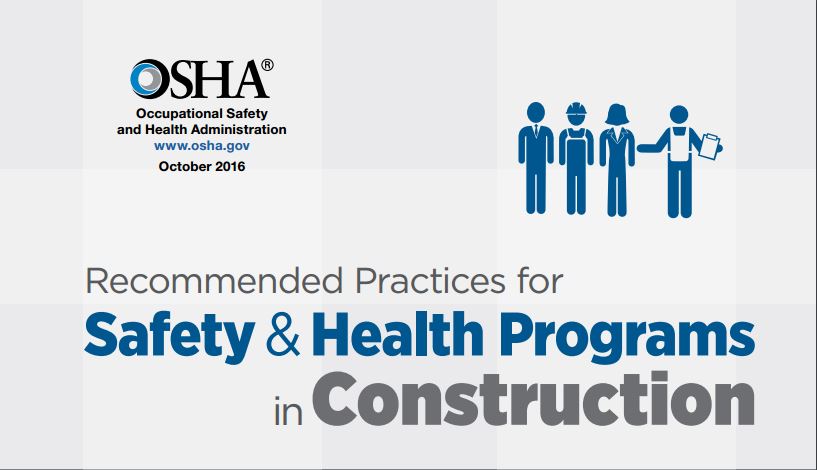A large focus of the construction industry, especially in recent years, is jobsite safety. Many large companies have significant resources set aside specifically for safety, but, unfortunately, that may be impossible for many small and medium sized construction companies to handle. As of the first quarter of 2016, the Bureau of Labor Statistics (BLS) reports that there are over 768,000 construction companies currently operating in the private industry and over 6.7 million construction workers between them. That’s a lot of companies and workers to keep safe throughout the year.
To make it easier on the small and medium sized construction companies, OSHA has recently released Recommended Practices for Safety and Health Programs in Construction, which will help companies develop a proactive approach to jobsite safety. Wearing PPE on the jobsite is important, but accident prevention is the ultimate key to a safe workplace.
The 40 page document covers a variety of topics, including management leadership, worker participation, hazard identification and assessment, hazard prevention and control, education and training, program evaluation and training, and communication and coordination.
"The recommendations outlined in this document will help contractors prevent injuries and illnesses on their construction sites and make their companies more profitable," said Assistant Secretary of Labor for Occupational Safety and Health Dr. David Michaels, in a press release. OSHA also states that a strong safety program can have additional benefits, as well, including: improvements in quality, higher morale, and higher retention of employees, among others.
The guide is an extremely useful and important tool for companies who lack the funds or experience to start their own safety program. We often hear about OSHA dropping large fines on contractors who don’t follow safety regulations, which can be a deterrent for some, but this is a step in the right direction for proactive education. By doing a lot of the heavy lifting for contractors, this new guide has a chance to create a much better work environment for thousands of workers and contractors throughout the country.
Full Guide: Recommended Practices for Safety and Health Programs in Construction | OSH











Last summer, Hilti announced that they had developed their first exoskeleton designed for construction tradespeople in a partnership with Ottobuck, a prosthetics, orthotics, and exoskeleton provider. Earlier this month, Hilti officially released the exoskeleton, announced more details, and published its retail price on their website.